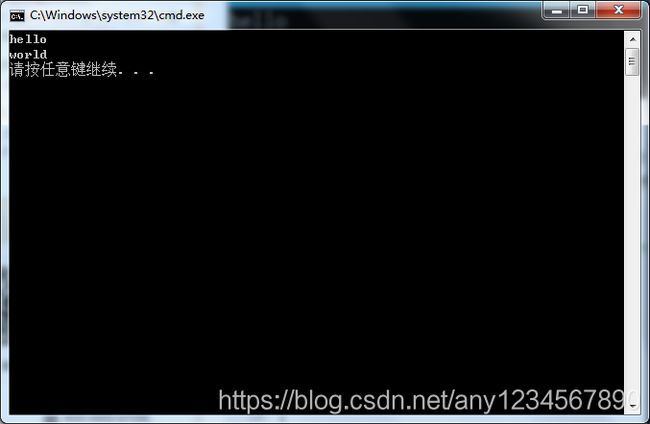- 多线程之——ExecutorCompletionService
阿福德
在我们开发中,经常会遇到这种情况,我们起多个线程来执行,等所有的线程都执行完成后,我们需要得到个线程的执行结果来进行聚合处理。我在内部代码评审时,发现了不少这种情况。看很多同学都使用正确,但比较啰嗦,效率也不高。本文介绍一个简单处理这种情况的方法:直接上代码:publicclassExecutorCompletionServiceTest{@TestpublicvoidtestExecutorCo
- python多线程程序设计 之一
IT_Beijing_BIT
#Python程序设计语言python
python多线程程序设计之一全局解释器锁线程APIsthreading.active_count()threading.current_thread()threading.excepthook(args,/)threading.get_native_id()threading.main_thread()threading.stack_size([size])线程对象成员函数构造器start/ru
- Python多线程实现大规模数据集高效转移
sand&wich
网络python服务器
背景在处理大规模数据集时,通常需要在不同存储设备、不同服务器或文件夹之间高效地传输数据。如果采用单线程传输方式,当数据量非常大时,整个过程会非常耗时。因此,通过多线程并行处理可以大幅提升数据传输效率。本文将分享一个基于Python多线程实现的高效数据传输工具,通过遍历源文件夹中的所有文件,将它们移动到目标文件夹。工具和库这个数据集转移工具主要依赖于以下Python标准库:os:用于文件系统操作,如
- Python实现下载当前年份的谷歌影像
sand&wich
python开发语言
在GIS项目和地图应用中,获取最新的地理影像数据是非常重要的。本文将介绍如何使用Python代码从Google地图自动下载当前年份的影像数据,并将其保存为高分辨率的TIFF格式文件。这个过程涉及地理坐标转换、多线程下载和图像处理。关键功能该脚本的核心功能包括:坐标转换:支持WGS-84与WebMercator投影之间转换,以及处理中国GCJ-02偏移。自动化下载:多线程下载地图瓦片,提高效率。图像
- WebMagic:强大的Java爬虫框架解析与实战
Aaron_945
Javajava爬虫开发语言
文章目录引言官网链接WebMagic原理概述基础使用1.添加依赖2.编写PageProcessor高级使用1.自定义Pipeline2.分布式抓取优点结论引言在大数据时代,网络爬虫作为数据收集的重要工具,扮演着不可或缺的角色。Java作为一门广泛使用的编程语言,在爬虫开发领域也有其独特的优势。WebMagic是一个开源的Java爬虫框架,它提供了简单灵活的API,支持多线程、分布式抓取,以及丰富的
- C# 开发教程-入门基础
天马3798
教程系列整理c#开发语言
1.C#简介、环境,程序结构2.C#基本语法,变量,控制局域,数据类型,类型转换3.C#数组、循环,Linq4.C#类,封装,方法5.C#枚举、字符串6.C#面相对象,继承,封装,多态7.C#特性、属性、反射、索引器8.C#委托,事件,集合,泛型9.C#匿名方法10.C#多线程更多:JQuery开发教程入门基础Vue开发基础入门教程Vue开发高级学习教程
- [面试高频问题]关于多线程的单例模式
朱玥玥要每天学习
java单例模式开发语言
单例模式什么是设计模式?设计模式可以看做为框架或者是围棋中的”棋谱”,红方当头炮,黑方马来跳.根据一些固定的套路下,能保证局势不会吃亏.在日常的程序设计中,往往有许多业务场景,根据这些场景,大佬们总结出了一些固定的套路.按照这个套路来实现代码,也不会吃亏.什么是单例模式,保证某类在程序中只有一个实例,而不会创建多份实例.单例模式具体的实现方式:可分为”懒汉模式”,”饿汉模式”.饿汉模式类加载的同时
- 基于flask做大模型SSE输出
Mark_Aussie
nlpflaskpython后端
默认情况下,Fask以多线程模式运行,每个请求都落在一个新线程上。SSE:基于HTTP的协议,用于实现服务器向客户端推送实时数据。使用长轮询机制,客户端通过HTTP连接向服务器发送请求,并保持该连接打开,服务器可以随时向客户端推送新的数据。SSE协议使用简单的文本格式,数据通过纯文本的消息流进行传输,每个消息以"data:"开头,以两个换行符"\n\n"结尾,如果传递的数据中有字典要使用变量传递。
- 为什么Node.js不适合CPU密集型应用?
weixin_54503231
node.js
Node.js不适合CPU密集型应用的原因主要基于其设计理念和核心特性,具体可以归纳为以下几点:单线程模型Node.js采用单线程模型来处理用户请求和异步I/O操作。虽然这种模型在处理高并发I/O密集型任务时非常高效,因为它避免了传统多线程模型中的线程上下文切换开销,但这也意味着它不能充分利用现代多核CPU的计算能力。对于需要大量计算资源的CPU密集型应用,单线程模型会成为瓶颈,导致应用性能受限。
- PCL 点云视窗类CloudViewer
LeonDL168
PCL算法计算机视觉人工智能视觉检测图像处理
点云视窗类CloudViewer是简单显示点云的可视化工具类,可以让用户用尽可能少的代码查看点云。注意:点云视窗类不能应用于多线程应用程序中。简单点云可视化如果用户想用几行代码可视化程序中所对应的地物,可以使用下面的代码:#include//...voidfoo(){pcl::PointCloud::Ptrcloud;//...为cloud添加对应的场景pcl::visualization::Cl
- 互联网 Java 工程师面试题(Java 面试题四)
苹果酱0567
面试题汇总与解析java中间件开发语言springboot后端
下面列出这份Java面试问题列表包含的主题多线程,并发及线程基础数据类型转换的基本原则垃圾回收(GC)Java集合框架数组字符串GOF设计模式SOLID抽象类与接口Java基础,如equals和hashcode泛型与枚举JavaIO与NIO常用网络协议Java中的数据结构和算法正则表达式JVM底层Java最佳实JDBCDate,Time与CalendarJava处理XMLJUnit编程现在是时候给
- 《Android进阶之光》— Android 书籍
王睿丶
Android永无止境《Android进阶之光》Android书籍Androidphoenix移动开发
文章目录第1章Android新特性1第2章MaterialDesign48第3章View体系与自定义View87第4章多线程编程165第5章网络编程与网络框架204第6章设计模式271第7章事件总线308第8章函数响应式编程333第9章注解与依赖注入框架382第10章应用架构设计422第11章系统架构与MediaPlayer框架460出版年:2017-7简介:《Android进阶之光》是一本And
- 《android进阶之光》——多线程编程(上)
TAING要一直努力
读书笔记
今天了解了下多线程编程,知识点如下:进程与线程:进程是什么?线程是什么?进程可以看作是程序的实体,是线程的容器,是受操作系统管理的基本运行单元,例如exe文件就是一个进程。线程是进程运行的一些子任务,是操作系统调度的最小单元,各线程拥有自己的计数器,堆栈,局部变量等,也可以访问线程间共享的内存。线程的状态有哪些?新创建,可运行,等待,超时等待,阻塞,终止怎么创建一个线程?-三种方法第一种,MyTr
- Unity3D多线程UI之ScrollYExtand
胡强_79a4
先附上git地址https://github.com/huqiang0204/huqiang.UnitySubThreadUI示例代码请看ScrollExTestPage可以绑定三种模型,头部,尾部,和中间数据部分这里只用到了中间数据模型和头部模型Listdatas=newList();ScrollYExtand.DataTemplatetmp=newScrollYExtand.DataTempl
- 多线程相关面试题(2024大厂高频面试题系列)
小橘子831
后端面试java面试后端
1、聊一下并行和并发有什么区别?并发是同一时间应对多件事情的能力,多个线程轮流使用一个或多个CPU并行是同一时间动手做多件事情的能力,4核CPU同时执行4个线程2、说一下线程和进程的区别?进程是正在运行程序的实例,进程中包含了线程,每个线程执行不同的任务不同的进程使用不同的内存空间,在当前进程下的所有线程可以共享内存空间3、如果在java中创建线程有哪些方式?在java中一共有四种常见的创建方式,
- Java多线程相关面试题整理
长河落日袁同学
不积跬步无以至千里java笔记多线程锁面试
目录1.什么是线程和进程?线程与进程有什么区别?那什么是上下文切换?进程间怎么通信?什么是用户线程和守护线程?2.并行和并发的区别?3.创建线程的几种方式?Runnable接口和Callable接口的区别?run()方法和start()有什么区别?4.Java线程状态和方法?描述线程的生命周期?一个线程两次调用start()方法会出现什么情况?sleep()和wait()方法的区别是什么?5.并发
- python 多线程抓取xunlei磁力下载链接
weixin_53748624
pythonpycharm
importurllib.requestimportreimporttimeimportthreadingclassSpider(object):def__init__(self):#定义字典,用于保存影片信息self.films_dict={}self.i=1self.lock1=threading.Lock()defstart(self):#调用下载函数,获取下载连接forpageinrang
- Java高并发编程详解系列-深入理解Thread构造
nihui123
高并发Java高并发Java高并发
上篇分享中主要是对线程的基本概念和基本操作做了一个分享,同时提出了两种常用的创建多线程的方法,当然在后期的分享中也会提及到更多的创建线程的方式,到后期的分享的时候再说。这次主要是深入的理解一下Thread的构造函数,通过构造函数对于Thread有一个更加深入的了解。这里首先提供一个JDK1.6的ThreadAPI截图线程命名规范 从源码分析可以看到在Thread类中默认提供了线程的命名方式,这个
- Redis 为什么这么快?
小海海不怕困难
Redisredis
决定Redis请求效率的因素主要是三个方面,分别是网络、cpu、内存。在网络层面,Redis采用多路复用的设计,提升了并发处理的连接数,不过这个阶段,Server端的所有IO操作,都是由同一个主线程处理的这个时候IO的瓶颈就会影响到Redis端的整体处理性能。所以从Redis6.0开始,在多路复用及层面增加了多线程的处理,来优化IO处理的能力不过,具体的数据操作仍然是由主线程来处理的,所以我们可以
- Python 课程8-多线程编程和多进程编程
可愛小吉
Python教學python开发语言threadingmultiprocessing
前言在现代编程中,处理并发任务是提高程序性能的关键之一。Python提供了多线程(threading)和多进程(multiprocessing)两种方式来实现并发编程。多线程适用于I/O密集型任务,而多进程则更适合CPU密集型任务。通过这两种技术,你可以高效地处理大规模数据、加速程序执行并优化资源利用。在本篇详细教程中,我们将讨论如何使用Python的threading模块实现多线程,以及如何使用
- C++多线程的简单使用
好学松鼠
C++C++多线程asyncpromise
多线程的使用,本文主要简单介绍使用多线程的几种方式,并使用几个简单的例子来介绍多线程,使用编译器为visualstudio。一、AsyncFuture使用的知识点有std::async和std::future1、std::async函数原型templatefuture::type>async(launchpolicy,Fn&&fn,Args&&...args);功能:第二个参数接收一个可调用对象(
- C# 多线程操作同一个文件,如何避免冲突
FlYFlOWERANDLEAF
c#开发语言
1使用lock经测试,依然存在线程冲突privatestaticobjectlocker=newobject();……lock(locker){stringbText=File.ReadAllText(FPath);returnbText;}……lock(locker){File.WriteAllText(FPath,aContent);}2使用ReaderWriterLockSlim经测试,依然
- java基础-线程间通信方式
问道飞鱼
Java开发技术java开发语言
文章目录1.wait()和notify()2.volatile关键字3.Java.util.concurrent包提供的工具类Semaphore(信号量)BlockingQueue(阻塞队列)4.Atomic类在Java中,线程间的通信是非常重要的,尤其是在多线程编程中,它有助于协调线程的行为,确保资源的正确访问和更新。Java提供了多种方式来实现线程间的通信,主要包括以下几种方法:1.wait(
- Java 中自定义线程池
胡英俊俊俊
#JUCjava开发语言
Java中自定义线程池的方式在Java开发中,线程池是非常常用的工具,它能够帮助我们更好地管理多线程任务,提升并发性能并避免过度创建线程导致的系统资源消耗。在Java中,线程池主要由ThreadPoolExecutor提供,该类支持自定义线程池的核心参数,如线程数、任务队列以及拒绝策略等。在这篇文章中,我们将讨论如何通过ThreadPoolExecutor来实现自定义线程池,以及常用的配置和使用方
- 网络编程9.4
江亭棠
网络linux
1、多进程多线程并发服务器,再实现一遍(重点模型)。多进程并发服务器:#include#defineSERPORT9999#defineSERIP"192.168.0.162"#defineBACKLOG10voidhande(intsss){if(sss==SIGCHLD){while(waitpid(-1,NULL,WNOHANG)!=-1);}}intmain(intargc,constch
- Java并发复习
vd_vd
Java并发安全容器java开发语言
Java基础1.为什么要使用并发编程?一般我们工作的电脑都有多核,我们创建多个线程,然后操作系统可以将多个线程分配给不同的CPU去执行,每个CPU执行一个线程,这样就提高了CPU使用效率。在网络购物中,我们买了一个东西的同时,需要减库存,生成订单等等这些操作,就可以进行拆分利用多线程的技术完成。面对复杂业务模型,并行程序串行会比程序更适应业务需求,而并发编程更能吻合这种业务拆分。->充分利用多核C
- HashMap 原理解释及其常见面试题
Justdoforever
java
HashMap原理解释及其常见面试题在多线程下在javaHashMap的1948或2239行都会出现死循环情况,1948行treeify函数中将链表转为树的时候,2239在balanceInsertion函数中,让树变为平衡时,总之多线程下HashMap在链表转树或涉及树的操作时会出现死循环。测试代码:importjava.util.*;publicclassMainTest{Mapmap=new
- 微服务分布式架构中,如何实现日志链路跟踪?
2401_84048542
程序员架构微服务分布式
MDC(MappedDiagnosticContext,映射调试上下文)是log4j和logback提供的一种方便在多线程条件下记录日志的功能。MDC可以看成是一个与当前线程绑定的Map,可以往其中添加键值对。MDC中包含的内容可以被同一线程中执行的代码所访问。当前线程的子线程会继承其父线程中的MDC的内容。当需要记录日志时,只需要从MDC中获取所需的信息即可。MDC的内容则由程序在适当的时候保存
- 一天认识一个硬件之CPU
哲伦贼稳妥
一天认识一个硬件IT技术电脑硬件电脑运维硬件工程其他
CPU,全称为中央处理器(CentralProcessingUnit),是计算机硬件系统的核心部件之一,负责执行计算机程序中的指令和处理数据。它相当于计算机的大脑,今天就来给大家分享一下台式机和笔记本大脑的对比。性能差异核心数量和频率:台式机CPU通常支持更多的核心数量和更高的运行频率,这使得它们在处理多线程任务和多任务处理方面更具优势。性能释放:笔记本CPU受限于散热和供电条件,功耗通常较低,导
- 谈谈你对多线程开发的理解?ios中有几种实现多线程的方法?
充满活力的早晨
好处:1.使用线程可以把占据时间长的程序中的任务放到后台去处理2.用户界面可以更加吸引人,这样比如用户点击了一个按钮去触发某些事件的处理,可以弹出一个进度条来显示处理的进度3.程序的运行速度可能加快4·在一些等待的任务实现上如用户输入、文件读写和网络收发数据等,线程就比较有用了。缺点:1.如果有大量的线程,会影响性能,因为操作系统需要在它们之间切换。2.更多的线程需要更多的内存空间。3.线程的中止
- 多线程编程之join()方法
周凡杨
javaJOIN多线程编程线程
现实生活中,有些工作是需要团队中成员依次完成的,这就涉及到了一个顺序问题。现在有T1、T2、T3三个工人,如何保证T2在T1执行完后执行,T3在T2执行完后执行?问题分析:首先问题中有三个实体,T1、T2、T3, 因为是多线程编程,所以都要设计成线程类。关键是怎么保证线程能依次执行完呢?
Java实现过程如下:
public class T1 implements Runnabl
- java中switch的使用
bingyingao
javaenumbreakcontinue
java中的switch仅支持case条件仅支持int、enum两种类型。
用enum的时候,不能直接写下列形式。
switch (timeType) {
case ProdtransTimeTypeEnum.DAILY:
break;
default:
br
- hive having count 不能去重
daizj
hive去重having count计数
hive在使用having count()是,不支持去重计数
hive (default)> select imei from t_test_phonenum where ds=20150701 group by imei having count(distinct phone_num)>1 limit 10;
FAILED: SemanticExcep
- WebSphere对JSP的缓存
周凡杨
WAS JSP 缓存
对于线网上的工程,更新JSP到WebSphere后,有时会出现修改的jsp没有起作用,特别是改变了某jsp的样式后,在页面中没看到效果,这主要就是由于websphere中缓存的缘故,这就要清除WebSphere中jsp缓存。要清除WebSphere中JSP的缓存,就要找到WAS安装后的根目录。
现服务
- 设计模式总结
朱辉辉33
java设计模式
1.工厂模式
1.1 工厂方法模式 (由一个工厂类管理构造方法)
1.1.1普通工厂模式(一个工厂类中只有一个方法)
1.1.2多工厂模式(一个工厂类中有多个方法)
1.1.3静态工厂模式(将工厂类中的方法变成静态方法)
&n
- 实例:供应商管理报表需求调研报告
老A不折腾
finereport报表系统报表软件信息化选型
引言
随着企业集团的生产规模扩张,为支撑全球供应链管理,对于供应商的管理和采购过程的监控已经不局限于简单的交付以及价格的管理,目前采购及供应商管理各个环节的操作分别在不同的系统下进行,而各个数据源都独立存在,无法提供统一的数据支持;因此,为了实现对于数据分析以提供采购决策,建立报表体系成为必须。 业务目标
1、通过报表为采购决策提供数据分析与支撑
2、对供应商进行综合评估以及管理,合理管理和
- mysql
林鹤霄
转载源:http://blog.sina.com.cn/s/blog_4f925fc30100rx5l.html
mysql -uroot -p
ERROR 1045 (28000): Access denied for user 'root'@'localhost' (using password: YES)
[root@centos var]# service mysql
- Linux下多线程堆栈查看工具(pstree、ps、pstack)
aigo
linux
原文:http://blog.csdn.net/yfkiss/article/details/6729364
1. pstree
pstree以树结构显示进程$ pstree -p work | grep adsshd(22669)---bash(22670)---ad_preprocess(4551)-+-{ad_preprocess}(4552) &n
- html input与textarea 值改变事件
alxw4616
JavaScript
// 文本输入框(input) 文本域(textarea)值改变事件
// onpropertychange(IE) oninput(w3c)
$('input,textarea').on('propertychange input', function(event) {
console.log($(this).val())
});
- String类的基本用法
百合不是茶
String
字符串的用法;
// 根据字节数组创建字符串
byte[] by = { 'a', 'b', 'c', 'd' };
String newByteString = new String(by);
1,length() 获取字符串的长度
&nbs
- JDK1.5 Semaphore实例
bijian1013
javathreadjava多线程Semaphore
Semaphore类
一个计数信号量。从概念上讲,信号量维护了一个许可集合。如有必要,在许可可用前会阻塞每一个 acquire(),然后再获取该许可。每个 release() 添加一个许可,从而可能释放一个正在阻塞的获取者。但是,不使用实际的许可对象,Semaphore 只对可用许可的号码进行计数,并采取相应的行动。
S
- 使用GZip来压缩传输量
bijian1013
javaGZip
启动GZip压缩要用到一个开源的Filter:PJL Compressing Filter。这个Filter自1.5.0开始该工程开始构建于JDK5.0,因此在JDK1.4环境下只能使用1.4.6。
PJL Compressi
- 【Java范型三】Java范型详解之范型类型通配符
bit1129
java
定义如下一个简单的范型类,
package com.tom.lang.generics;
public class Generics<T> {
private T value;
public Generics(T value) {
this.value = value;
}
}
- 【Hadoop十二】HDFS常用命令
bit1129
hadoop
1. 修改日志文件查看器
hdfs oev -i edits_0000000000000000081-0000000000000000089 -o edits.xml
cat edits.xml
修改日志文件转储为xml格式的edits.xml文件,其中每条RECORD就是一个操作事务日志
2. fsimage查看HDFS中的块信息等
&nb
- 怎样区别nginx中rewrite时break和last
ronin47
在使用nginx配置rewrite中经常会遇到有的地方用last并不能工作,换成break就可以,其中的原理是对于根目录的理解有所区别,按我的测试结果大致是这样的。
location /
{
proxy_pass http://test;
- java-21.中兴面试题 输入两个整数 n 和 m ,从数列 1 , 2 , 3.......n 中随意取几个数 , 使其和等于 m
bylijinnan
java
import java.util.ArrayList;
import java.util.List;
import java.util.Stack;
public class CombinationToSum {
/*
第21 题
2010 年中兴面试题
编程求解:
输入两个整数 n 和 m ,从数列 1 , 2 , 3.......n 中随意取几个数 ,
使其和等
- eclipse svn 帐号密码修改问题
开窍的石头
eclipseSVNsvn帐号密码修改
问题描述:
Eclipse的SVN插件Subclipse做得很好,在svn操作方面提供了很强大丰富的功能。但到目前为止,该插件对svn用户的概念极为淡薄,不但不能方便地切换用户,而且一旦用户的帐号、密码保存之后,就无法再变更了。
解决思路:
删除subclipse记录的帐号、密码信息,重新输入
- [电子商务]传统商务活动与互联网的结合
comsci
电子商务
某一个传统名牌产品,过去销售的地点就在某些特定的地区和阶层,现在进入互联网之后,用户的数量群突然扩大了无数倍,但是,这种产品潜在的劣势也被放大了无数倍,这种销售利润与经营风险同步放大的效应,在最近几年将会频繁出现。。。。
如何避免销售量和利润率增加的
- java 解析 properties-使用 Properties-可以指定配置文件路径
cuityang
javaproperties
#mq
xdr.mq.url=tcp://192.168.100.15:61618;
import java.io.IOException;
import java.util.Properties;
public class Test {
String conf = "log4j.properties";
private static final
- Java核心问题集锦
darrenzhu
java基础核心难点
注意,这里的参考文章基本来自Effective Java和jdk源码
1)ConcurrentModificationException
当你用for each遍历一个list时,如果你在循环主体代码中修改list中的元素,将会得到这个Exception,解决的办法是:
1)用listIterator, 它支持在遍历的过程中修改元素,
2)不用listIterator, new一个
- 1分钟学会Markdown语法
dcj3sjt126com
markdown
markdown 简明语法 基本符号
*,-,+ 3个符号效果都一样,这3个符号被称为 Markdown符号
空白行表示另起一个段落
`是表示inline代码,tab是用来标记 代码段,分别对应html的code,pre标签
换行
单一段落( <p>) 用一个空白行
连续两个空格 会变成一个 <br>
连续3个符号,然后是空行
- Gson使用二(GsonBuilder)
eksliang
jsongsonGsonBuilder
转载请出自出处:http://eksliang.iteye.com/blog/2175473 一.概述
GsonBuilder用来定制java跟json之间的转换格式
二.基本使用
实体测试类:
温馨提示:默认情况下@Expose注解是不起作用的,除非你用GsonBuilder创建Gson的时候调用了GsonBuilder.excludeField
- 报ClassNotFoundException: Didn't find class "...Activity" on path: DexPathList
gundumw100
android
有一个工程,本来运行是正常的,我想把它移植到另一台PC上,结果报:
java.lang.RuntimeException: Unable to instantiate activity ComponentInfo{com.mobovip.bgr/com.mobovip.bgr.MainActivity}: java.lang.ClassNotFoundException: Didn't f
- JavaWeb之JSP指令
ihuning
javaweb
要点
JSP指令简介
page指令
include指令
JSP指令简介
JSP指令(directive)是为JSP引擎而设计的,它们并不直接产生任何可见输出,而只是告诉引擎如何处理JSP页面中的其余部分。
JSP指令的基本语法格式:
<%@ 指令 属性名="
- mac上编译FFmpeg跑ios
啸笑天
ffmpeg
1、下载文件:https://github.com/libav/gas-preprocessor, 复制gas-preprocessor.pl到/usr/local/bin/下, 修改文件权限:chmod 777 /usr/local/bin/gas-preprocessor.pl
2、安装yasm-1.2.0
curl http://www.tortall.net/projects/yasm
- sql mysql oracle中字符串连接
macroli
oraclesqlmysqlSQL Server
有的时候,我们有需要将由不同栏位获得的资料串连在一起。每一种资料库都有提供方法来达到这个目的:
MySQL: CONCAT()
Oracle: CONCAT(), ||
SQL Server: +
CONCAT() 的语法如下:
Mysql 中 CONCAT(字串1, 字串2, 字串3, ...): 将字串1、字串2、字串3,等字串连在一起。
请注意,Oracle的CON
- Git fatal: unab SSL certificate problem: unable to get local issuer ce rtificate
qiaolevip
学习永无止境每天进步一点点git纵观千象
// 报错如下:
$ git pull origin master
fatal: unable to access 'https://git.xxx.com/': SSL certificate problem: unable to get local issuer ce
rtificate
// 原因:
由于git最新版默认使用ssl安全验证,但是我们是使用的git未设
- windows命令行设置wifi
surfingll
windowswifi笔记本wifi
还没有讨厌无线wifi的无尽广告么,还在耐心等待它慢慢启动么
教你命令行设置 笔记本电脑wifi:
1、开启wifi命令
netsh wlan set hostednetwork mode=allow ssid=surf8 key=bb123456
netsh wlan start hostednetwork
pause
其中pause是等待输入,可以去掉
2、
- Linux(Ubuntu)下安装sysv-rc-conf
wmlJava
linuxubuntusysv-rc-conf
安装:sudo apt-get install sysv-rc-conf 使用:sudo sysv-rc-conf
操作界面十分简洁,你可以用鼠标点击,也可以用键盘方向键定位,用空格键选择,用Ctrl+N翻下一页,用Ctrl+P翻上一页,用Q退出。
背景知识
sysv-rc-conf是一个强大的服务管理程序,群众的意见是sysv-rc-conf比chkconf
- svn切换环境,重发布应用多了javaee标签前缀
zengshaotao
javaee
更换了开发环境,从杭州,改变到了上海。svn的地址肯定要切换的,切换之前需要将原svn自带的.svn文件信息删除,可手动删除,也可通过废弃原来的svn位置提示删除.svn时删除。
然后就是按照最新的svn地址和规范建立相关的目录信息,再将原来的纯代码信息上传到新的环境。然后再重新检出,这样每次修改后就可以看到哪些文件被修改过,这对于增量发布的规范特别有用。
检出


